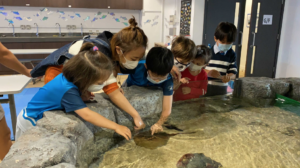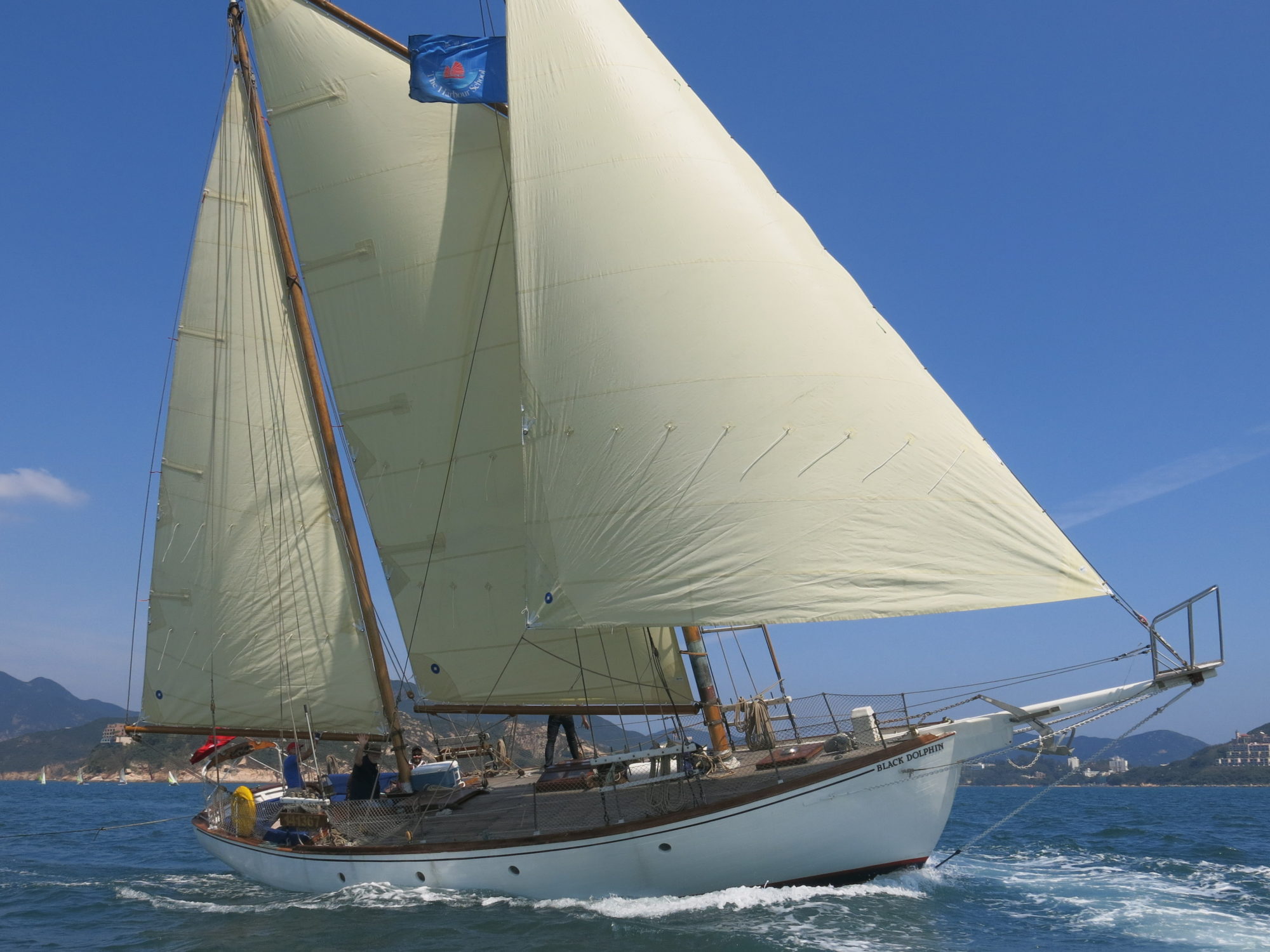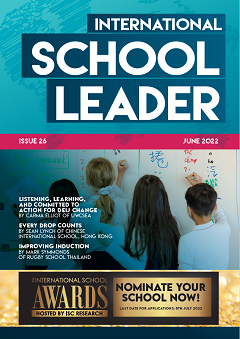By Jadis Blurton
At this year’s International School Awards, The Harbour School, Hong Kong received the Teaching and Learning Award for its place-based experiential learning initiative.
Some people live by a forest, which invites a study of silvology. Some live near an airport, which provides opportunities for the study of aviation and mechanics. The Harbour School (THS) is located on an island, which means the ocean is its backyard, front yard, playground and classroom.
To take advantage of these opportunities, THS integrates marine science resources and experts into all aspects of its curriculum across all grade levels. Our marine science programme (MSP) includes both a 50-foot sailboat (The Black Dolphin) and a state-of-the-art marine science centre (MSC) with many marine animals that students can befriend and care for, including a touch-tank with bamboo sharks, horseshoe crabs, a stingray and other marine life. Faculty from the MSP actively work with the school’s teaching teams across different disciplines, including science, social studies, literacy, mathematics and the arts to incorporate ocean and marine life topics.
Any topic any time
The challenge for THS was to create and promote experiential learning as part of the curriculum rather than adjacent or in addition to it. Although experiential education has a long tradition and extensive benefits, many schools or teachers consider it as something to be done outside of the traditional curriculum – sometimes so far outside as to be extracurricular in the sense of after-school or holiday programming. Other schools immerse themselves in experiential education to the exclusion of prescribed curricular content. The goal at THS was to illustrate that experiential learning could take place within the regular class curriculum and across numerous subject areas and ages. In other words, at THS, marine science is not an extra class – it is potentially a part of all classes.
The exciting aspect of integrating marine science across disciplines and ages is the variety of activities and applications that emerge. First graders studying the history of Hong Kong reconstruct the life of the pirate Cheung Po Tsai aboard The Black Dolphin. When Grade Five students learn about circuits and electricity, they also learn about electrical animals and how their biology has adapted to produce energy charges. And when Grade Two students learn about sound and sound waves, they also learn about echolocation. Students learning about water chemistry or marine biodiversity may go out on The Black Dolphin to measure water quality in the ocean or to count and classify marine life. Fourth graders who are studying adaptation create imaginary ‘evolved’ marine animals in an art class. Fifth graders studying the age of exploration map the Hong Kong coastline, while third graders studying Greek history learn about lodestones, make compasses, ‘join’ the Greek navy and pour libations to Poseidon aboard the boat. The list of potential activities is endless as individual classroom teachers work with field experts to co-create activities that allow for a deeper understanding of their designated curriculum while also developing and maintaining knowledge about and love of the ocean.
Of course, students and teachers may also use the MSP’s resources and experts for more targeted studies of ocean science itself. During THS’s most recent STEAM week, one class used design thinking and engineering skills to plan and design artificial reefs for coral and oysters, then used The Black Dolphin to deploy them.
Each year, many students from primary grades volunteer to become docents in the MSC. Most work a significant number of hours (outside of class) to become student experts who can competently participate in the care of marine animals and eloquently inform others about them.
High school students may choose to take a formal marine research or marine biology course for credit, or they may decide to serve as interns in the MSP. Some high school students also choose to be assistant teachers during the school holiday or in after-school programmes. (Extracurricular and holiday courses run by the MSP fill up almost immediately.) One student completed award-winning research on the effects of climate change on Goniastrea aspera, a particularly hardy coral local to Hong Kong.
A resource for all
Both the MSC and The Black Dolphin are perceived as resources for the students as well as for classes and teachers. One wall of the MSC is entirely devoted to individual tanks that may be used for independent or team research by either primary or secondary students upon request. Each tank holds separate controls for temperature, and aspects such as water chemistry may also vary from tank to tank. Students as young as Grade Two have initiated independent research.
Similarly, The Black Dolphin may be used when students have a research or creative interest. In one instance, a fifth grader learned that an incinerator had been proposed on a nearby island, and he initiated research of the water quality around the island for ‘before’ measures. (The incinerator was ultimately not built, so no ‘after’ measures were necessary.)
High schoolers wishing to film The Tempest used The Black Dolphin for the first scene as they tossed in a fictitious storm.
Joy and responsibility
In addition to providing profound learning experiences, the MSP is a source of fun and collaboration. Students today need to greet the world and each other every day with optimism and productivity. The opportunities provided by the programme facilitate those feelings. Past research indicates that primary school students who are exposed to ocean literacy have a heightened interest in science, deeper knowledge of marine ecosystems and animals, and an increased willingness to work in teams and help each other. Our experience certainly reflects this.
Students also need to feel a responsibility to help sustain the planet we live on. By taking real action, students not only learn about the topics they are studying but also that they can take real action and those actions make a difference. Their success in facing these complex tasks teaches them that they can be successful and the world’s problems are not insurmountable.
By integrating ocean literacy across the curriculum, students develop a deep sense of appreciation and responsibility for not only our oceans and marine creatures but all of nature. The United Nations has proclaimed a Decade of Ocean Science for Sustainable Development (2021–2030) “to reverse the cycle of decline in ocean health and ensure that ocean science can fully support countries in creating improved conditions for sustainable development of the world’s oceans.” This is a call to action for all of us, and one we take very seriously at THS.

Bringing place-based learning into the curriculum
- Identify a subject or theme related to the environment in which your community or school site is located that is comprehensive and compelling.
- Either hire or find field expert volunteers in your chosen subject.
- Gather whatever resources are necessary to implement your subject or theme.
- Allow structured time for your class teachers and field experts to co-create activities related to your curriculum.
- Find ways to record activities so that they can be evaluated and repeated.

Dr Jadis Blurton is Founder and Head of School at The Harbour School (THS), Hong Kong. Connect directly with Jadis on LinkedIn.


